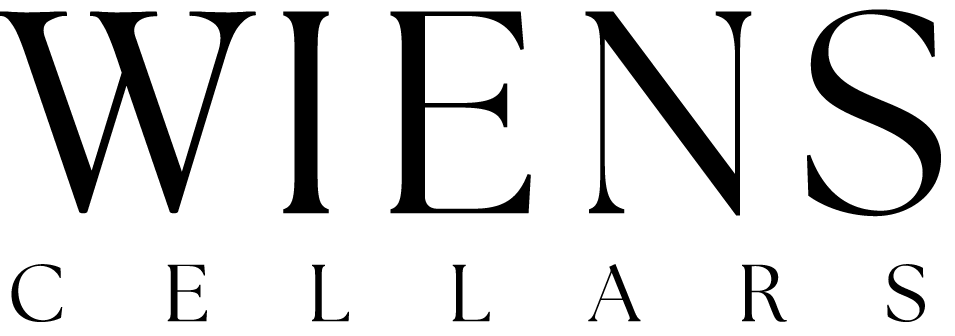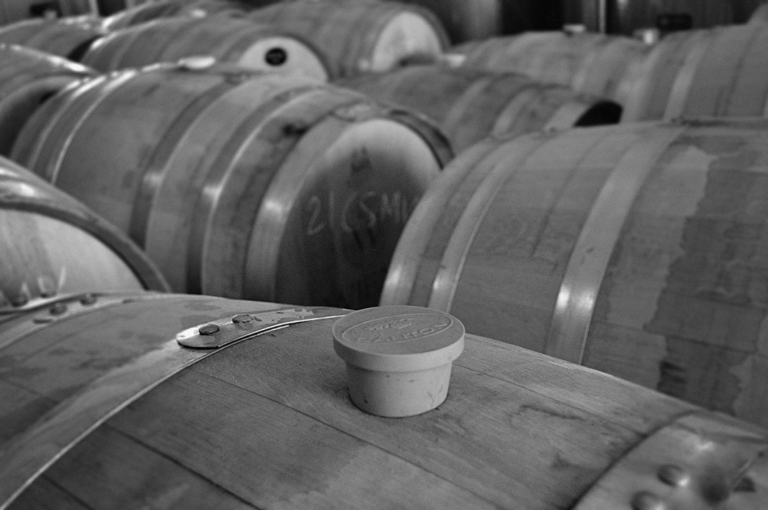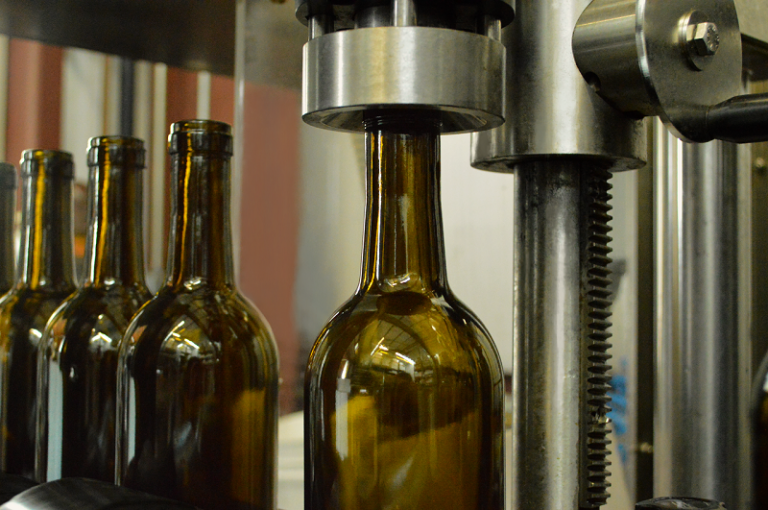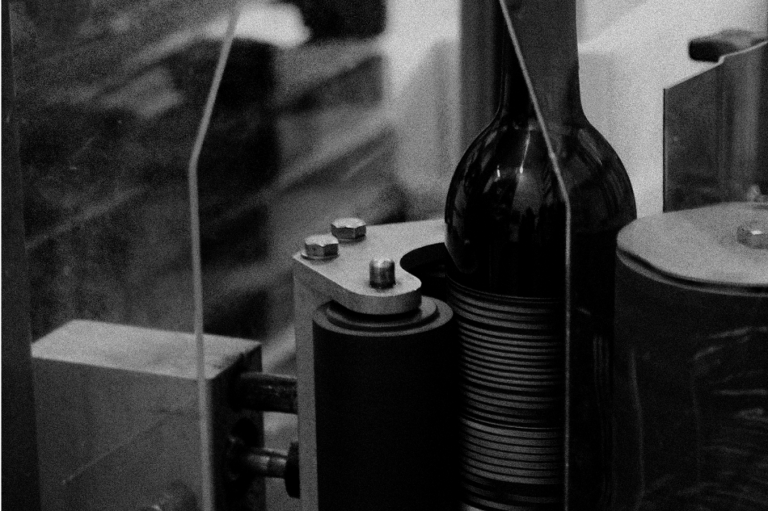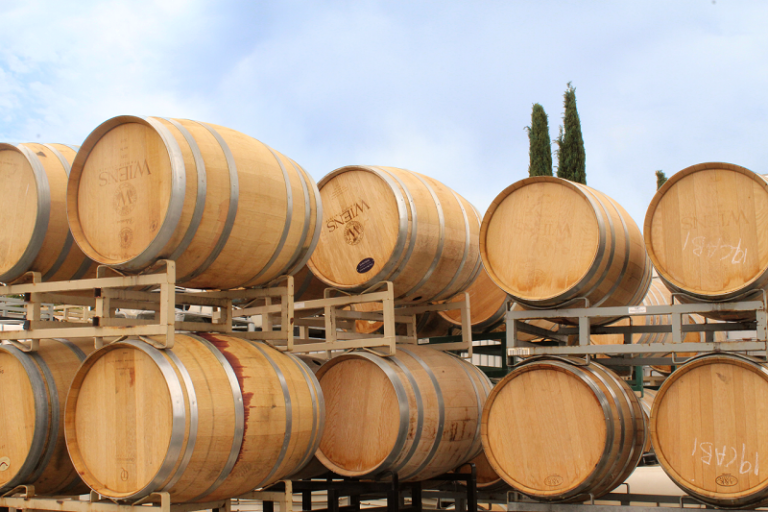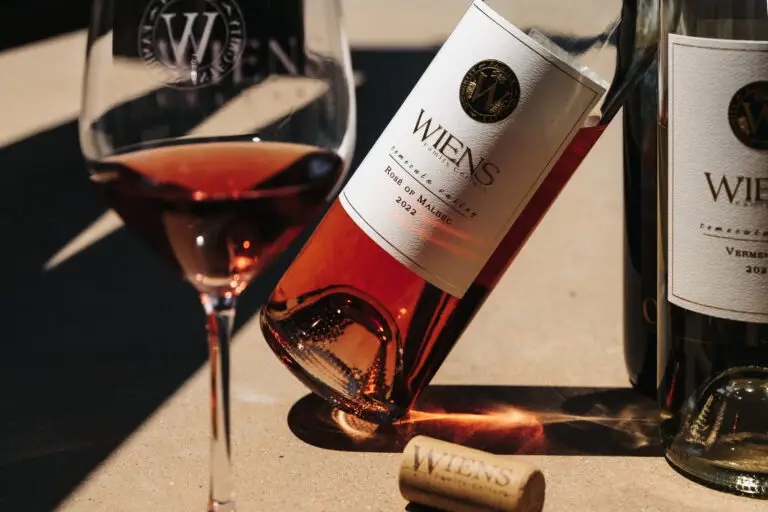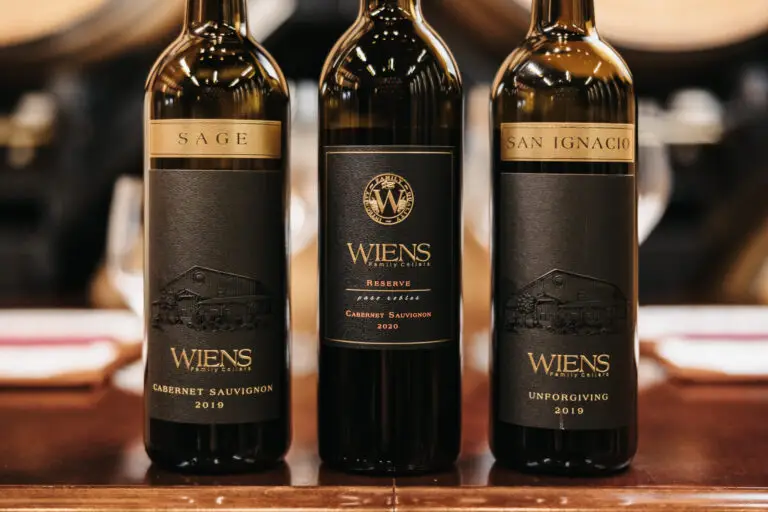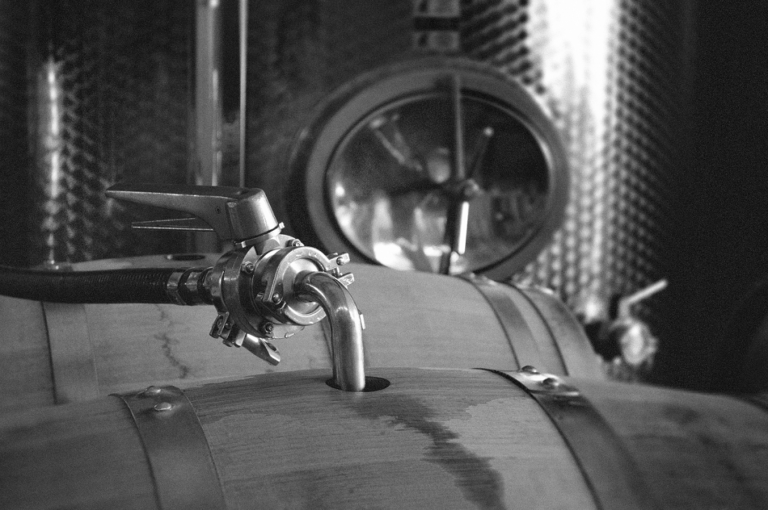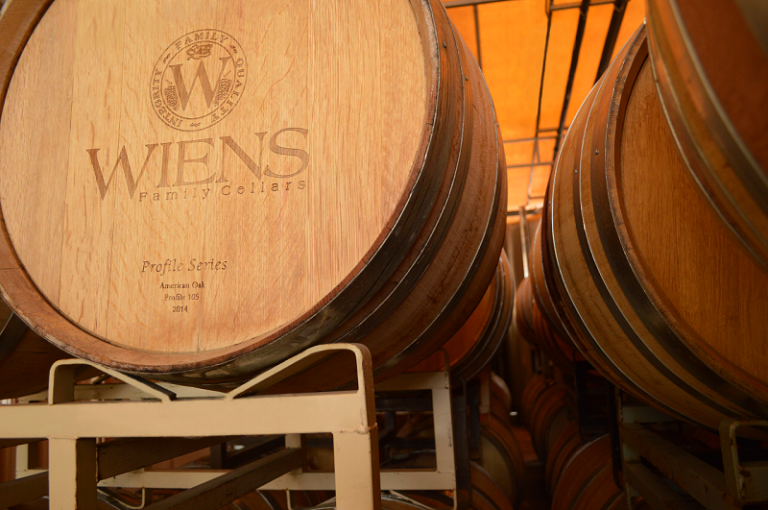In the vast and nuanced world of winemaking, the art of blending stands as a testament to the creativity and skill of the vintner. Beyond the individual character of varietals, the symphony of flavors, aromas, and textures that emerges from the marriage of different wines is a captivating journey. This exploration delves into the heart of wine blending—a practice with deep historical roots and an ever-evolving present. From the chemistry behind the blend to the artistic choices made by winemakers, we embark on a journey to understand the delicate balance that transforms grape varietals into harmonious and exquisite expressions in the glass. Welcome to the enchanting realm of wine blending, where science meets art, and every sip tells a story.
Definition of Wine Blending and its Historical Significance
Wine blending, an age-old craft, is an art form that involves combining different wines to achieve a final product with unique characteristics. This practice has deep historical roots, dating back centuries to winemaking traditions that sought to enhance flavors, aromas, and overall quality. As we delve into the world of blending, we uncover the fascinating journey of how this technique has evolved and become an integral part of winemaking.
The Objectives of Blending Different Wines
Beyond historical context, understanding why winemakers blend is crucial. Blending is not merely a practical necessity; it’s a deliberate choice made with specific objectives in mind. From balancing flavors to enhancing complexity, winemakers strategically blend different varietals to craft wines that transcend the sum of their parts. This exploration aims to unravel the objectives that drive winemakers to embark on the artful journey of blending and how it shapes the final character of the wine.
The Components of Blending
Types of Wines Commonly Used in Blends
Blending is an intricate art that involves marrying different grape varieties to achieve a wine that transcends individual characteristics. Winemakers strategically choose specific types of wines to craft blends with distinct profiles. Here are some common types used in blends:
- Merlot
- Characteristics: Merlot is celebrated for its approachable, soft tannins and luscious fruit profile. It adds a velvety texture to blends, offering notes of plum, red cherry, and sometimes chocolate.
- Cabernet Sauvignon
- Characteristics: Known for its bold tannins, deep color, and complex structure, Cabernet Sauvignon contributes intensity and aging potential to blends. It often imparts flavors of blackcurrant, black cherry, and cedar.
- Syrah/Shiraz
- Characteristics: Syrah brings a bold and robust character to blends. With dark, concentrated flavors of blackberry, plum, and hints of spice, it enhances the structure and complexity of the wine.
- Zinfandel
- Characteristics: Zinfandel is known for its ripe, jammy fruit flavors and often higher alcohol content. It contributes a rich and fruity dimension to red blends, with notes of blackberry, raspberry, and sometimes peppery spice.
- Chardonnay
- Characteristics: As a white grape, Chardonnay exhibits a diverse range of styles. Unoaked Chardonnay brings crisp acidity and vibrant citrus flavors, while oaked versions offer a creamy texture with notes of vanilla and butter.
- Sauvignon Blanc
- Characteristics: Sauvignon Blanc is prized for its high acidity and bright, zesty character. It brings refreshing citrus, green apple, and herbal notes to white blends, adding a lively and invigorating quality.
- Viognier
- Characteristics: Viognier contributes floral aromas, peachy sweetness, and a full-bodied texture. In small amounts, it enhances the aromatic profile of white blends, providing a captivating and aromatic lift.
Understanding the characteristics of these wines allows winemakers to play with a broad palette, creating blends that showcase the best attributes of each varietal. The result is a harmonious fusion that delights the palate with complexity and balance.
Understanding Varietals and Their Characteristics
To blend successfully, a winemaker must be a maestro, intimately acquainted with the characteristics of each varietal. Merlot, known for its softness, might add a velvety texture, while Cabernet Sauvignon contributes structure and boldness. Chardonnay’s buttery richness contrasts with the vibrant acidity of Sauvignon Blanc. Understanding these nuances is akin to knowing the instruments in an ensemble, allowing the winemaker to craft a perfectly balanced and harmonious blend.
The Blending Process
Steps in the Blending Process
The blending process is a delicate dance where various wine components come together to create a harmonious final product. Here are the key steps involved:
- Selection of Base Wines
- Blending typically starts with the winemaker selecting base wines, each made from a specific grape variety. These wines serve as the foundation, contributing primary characteristics to the final blend.
- Trial Blends
- Winemakers create small trial blends, experimenting with different proportions of base wines. This phase allows them to assess how each component interacts and refine the balance of flavors, aromas, and structural elements.
- Tasting and Evaluation
- The winemaking team conducts extensive tastings to evaluate the trial blends. This sensory analysis helps identify the most promising combinations and guides adjustments to achieve the desired style and quality.
- Fine-Tuning
- With the preferred blend identified, winemakers may fine-tune the composition by making subtle adjustments. This could involve tweaking the percentage of each varietal or incorporating specific barrels for added complexity.
- Oak Influence
- If the blend includes oak-aged wines, decisions about barrel selection and aging duration play a crucial role. Oak imparts additional flavors, textures, and aromas, enhancing the overall complexity of the blend.
- Maturation and Integration
- The final blend is allowed to mature, facilitating the integration of its components. This stage, often conducted in stainless steel tanks or oak barrels, allows the wine to develop a seamless character.
The Role of a Winemaker in Crafting a Blend
The winemaker’s expertise is paramount in crafting a successful blend. Their role involves a combination of artistry, technical knowledge, and a keen understanding of the desired wine style. Here’s a closer look at the winemaker’s contributions:
- Artistic Vision
- Winemakers bring a unique vision to the blending process, envisioning the final wine’s character and style. This creative aspect involves making choices that align with the winery’s philosophy and the market’s preferences.
- Technical Precision
- Understanding the chemistry of each varietal is crucial. Winemakers analyze factors such as acidity, tannin levels, and flavor profiles to ensure a well-balanced blend that ages gracefully.
- Blending Experience
- Experienced winemakers draw on their knowledge of past vintages, blending trials, and grape characteristics. This wealth of experience guides decision-making, allowing them to navigate the complexities of the blending process.
- Consistency
- For wineries with established brands, maintaining consistency across vintages is vital. Winemakers use their expertise to replicate successful blends, ensuring that consumers can trust the quality and style of the wine year after year.
In essence, the winemaker serves as both artist and scientist, orchestrating a symphony of flavors to create a blend that captivates the palate and reflects the essence of the winery’s identity.
The Science of Blending
How Different Varietals Interact Chemically
The science of blending delves into the intricate chemistry behind how different grape varietals interact when combined. Each grape variety brings a unique chemical composition to the blend, and understanding these interactions is key to crafting a well-balanced wine. Here are the chemical aspects involved:
- Phenolic Compounds
- Grape skins contain phenolic compounds such as tannins, anthocyanins, and flavonoids. The interaction of these compounds with those from other varietals can influence the wine’s color, mouthfeel, and aging potential. For example, blending a varietal with high tannins with one that has softer tannins can create a smoother, more approachable blend.
- Acidity Levels
- Different grape varieties have varying levels of acidity. Blending allows winemakers to balance acidity, enhancing freshness and providing structure to the wine. The chemical interplay between acids influences the overall taste profile, contributing to the wine’s complexity.
- Aromatic Compounds
- Each grape variety contributes distinct aromatic compounds to the blend. Through chemical interactions, these compounds can combine or complement each other, resulting in a more complex aromatic profile. This complexity is often sought after in blends, offering a sensory tapestry of scents.
The Art Behind the Science
Balancing Elements: Body, Tannins, Acidity, and Sweetness
The art of blending in winemaking involves a meticulous balance of key elements that define a wine’s character. Winemakers artfully navigate the following components to craft a well-rounded and harmonious blend:
- Body
- Achieving the desired body in a wine involves blending varietals with different levels of extract, alcohol, and glycerol. Some grapes contribute a fuller, more robust body, while others bring a lighter, more delicate structure. The art lies in finding the perfect synergy to create a wine with the ideal weight on the palate.
- Tannins
- Tannins, derived from grape skins, seeds, and stems, play a crucial role in a wine’s structure and aging potential. Blending allows winemakers to balance tannin levels, ensuring a wine’s texture is neither too astringent nor too soft. This careful equilibrium contributes to the wine’s overall mouthfeel and longevity.
- Acidity
- The acidity of a wine is a key determinant of its freshness and liveliness. Different grape varieties possess varying levels of acidity. Winemakers use blending to adjust acidity, creating wines with the right level of crispness and balance. This element is vital in enhancing the overall vibrancy and aging potential of the blend.
- Sweetness
- While most dry wines result from the fermentation of grape sugars, some varietals may retain a hint of residual sweetness. Blending allows winemakers to fine-tune the perception of sweetness, ensuring it aligns with the wine’s style. This balance is crucial in achieving the desired flavor profile, especially in off-dry or semi-sweet blends.
Famous Wine Blends from Around the World
Bordeaux Blends
Bordeaux blends originate from the Bordeaux wine region in France, known for producing some of the world’s most esteemed and sought-after wines. These blends typically feature a combination of the following grape varieties:
- Cabernet Sauvignon
- Known for its bold tannins and deep, complex flavors, Cabernet Sauvignon forms the backbone of Bordeaux blends. It contributes structure, aging potential, and notes of blackcurrant.
- Merlot
- Adding a velvety texture and plump fruitiness, Merlot softens the edges of the blend. It brings flavors of plum, cherry, and herbal nuances, creating a harmonious balance.
- Cabernet Franc
- Cabernet Franc contributes aromatic complexity, herbal notes, and a touch of spice. It complements the structure of Cabernet Sauvignon and adds layers of fragrance to the blend.
- Petit Verdot and Malbec
- In smaller quantities, Petit Verdot and Malbec may be included to enhance color, intensity, and provide additional flavor dimensions.
Example: Château Margaux (Bordeaux, France) – Château Margaux, a renowned Bordeaux estate, exemplifies the artistry of Bordeaux blends. Their Grand Vin combines Cabernet Sauvignon, Merlot, Cabernet Franc, and Petit Verdot, showcasing elegance, complexity, and the ability to age gracefully.
Rhône Blends
Rhône blends hail from the Rhône Valley in France, and they can be broadly categorized into two styles: Northern Rhône and Southern Rhône.
- Northern Rhône
- Syrah takes center stage in Northern Rhône blends, known for its peppery, savory, and bold characteristics. Viognier may be co-fermented to add floral aromas and a touch of elegance.
Example: Côte-Rôtie (Northern Rhône, France) – Côte-Rôtie blends Syrah with a small percentage of Viognier, creating wines with intense aromatics, structure, and a unique aromatic profile.
- Southern Rhône
- Grenache is a dominant player in Southern Rhône blends, offering ripe fruit flavors and warmth. Syrah, Mourvèdre, and other varieties contribute complexity, spice, and structure.
Example: Châteauneuf-du-Pape (Southern Rhône, France) – Châteauneuf-du-Pape blends Grenache, Syrah, and Mourvèdre, among others, resulting in robust wines with a rich tapestry of flavors, including dark fruits, herbs, and spices.
Super Tuscans and Other Notable Blends
Super Tuscans emerged in Italy as a departure from traditional Chianti blends, often incorporating non-indigenous grape varieties. These blends showcase innovation and a departure from strict appellation regulations.
Example: Sassicaia (Tuscany, Italy) – Sassicaia, a pioneering Super Tuscan, blends Cabernet Sauvignon and Cabernet Franc. This iconic wine broke conventions, highlighting the potential of Bordeaux varieties in the Tuscan terroir.
Other Notable Blends
- Priorat, Spain
- Priorat blends often feature Garnacha (Grenache), Carignan, and international varieties like Cabernet Sauvignon, producing powerful, full-bodied wines.
- Napa Valley, USA
- Napa Valley Bordeaux-style blends commonly include Cabernet Sauvignon, Merlot, and Cabernet Franc, showcasing the region’s ability to produce rich, opulent wines.
- South Africa
- Bordeaux-style blends from regions like Stellenbosch often feature a combination of Cabernet Sauvignon, Merlot, and Cabernet Franc, expressing the diversity of South African terroir.
These famous blends illustrate the diverse approaches to winemaking, showcasing the influence of grape varieties, terroir, and the winemaker’s vision on the final composition. Each blend tells a unique story, reflecting the character and identity of its origin.
Blending for Consistency
Achieving Brand Consistency Across Vintages
Blending plays a crucial role in ensuring a winery maintains a consistent style and quality across different vintages. Winemakers strive to create a recognizable and dependable flavor profile that consumers can associate with the brand, building trust and loyalty.
Methods for Achieving Consistency
- Blend of Multiple Vineyards
- Winemakers often source grapes from various vineyards, each contributing unique characteristics. By blending these components, the winemaker can create a balanced and consistent wine.
- Reserving a Portion of Previous Vintages
- Wineries may set aside a portion of each vintage to use in future blends. This allows them to incorporate elements of past successes, maintaining a thread of continuity and familiarity for loyal customers.
- Adjusting Varietal Percentages
- Winemakers have the flexibility to adjust the percentages of different varietals in the blend. This adaptability helps in compensating for variations in grape ripeness, weather conditions, and other factors.
- Using a Core Grape Variety
- Some wineries establish a core grape variety as the backbone of their blends. This grape provides a consistent foundation, and other components are adjusted to complement its characteristics.
Example: Opus One (Napa Valley, USA)
Opus One, a renowned winery in Napa Valley, produces Bordeaux-style blends with a commitment to consistency. By carefully selecting grapes from their estate vineyards and employing meticulous blending techniques, Opus One achieves a harmonious and recognizable style in each vintage.
Blending to Correct or Enhance Wine Batches
Blending is a powerful tool for winemakers to address challenges or enhance desirable traits in specific batches of wine. It allows them to fine-tune the final product, ensuring it meets the winery’s quality standards and aligns with the intended style.
Scenarios for Blending to Correct or Enhance
- Balancing Tannins and Acidity
- If a wine exhibits excessive tannins or acidity, blending with another wine that has complementary characteristics can help achieve a more harmonious balance.
- Compensating for Variability
- Natural variations in grape ripeness, weather conditions, or vineyard characteristics can lead to variability in individual batches. Blending provides a way to mitigate these variations and produce a more uniform wine.
- Enhancing Aromatic Complexity
- Blending wines with distinct aromatic profiles can result in a more complex and expressive final blend. This is especially relevant when working with varietals that contribute unique aromas.
- Adjusting Alcohol Levels
- In regions where grape ripeness can lead to high alcohol levels, winemakers may blend with wines of lower alcohol content to achieve a more balanced final product.
Example: Penfolds Grange (South Australia) – Penfolds Grange, an iconic Australian wine, is known for its consistent quality achieved through meticulous blending. The winemaking team carefully selects and blends Shiraz grapes from various vineyards to create a wine that reflects the house style while addressing the nuances of each vintage.
Blending for consistency and refinement is both an art and a science, allowing winemakers to showcase the best qualities of each vintage while maintaining a cohesive identity for their brand.
Profiles of Wineries Known for Their Blended Wines
- Penfolds (South Australia)
- Philosophy: Penfolds is renowned for its artful blending, notably with wines like Grange. The winery’s philosophy centers on crafting iconic blends that balance the unique characteristics of various vineyards and grape varieties.
- Approach: Penfolds’ Chief Winemaker, Peter Gago, leads a team dedicated to blending excellence. They meticulously select grapes from different regions, creating nuanced blends that express the best of each vintage.
- Ridge Vineyards (California, USA)
- Philosophy: Ridge Vineyards embraces a minimalist approach to winemaking, emphasizing the essence of the vineyard. Their blends, such as the Monte Bello, showcase the distinctive terroir of their estate vineyards.
- Approach: Winemaker Paul Draper, a pioneer in California winemaking, follows traditional methods and believes in minimal intervention. The blending process at Ridge aims to highlight the unique characteristics of each varietal.
- Château Palmer (Bordeaux, France)
- Philosophy: Château Palmer, a prestigious Bordeaux estate, follows a philosophy of blending for elegance and longevity. Their grand vin reflects the synergy of Cabernet Sauvignon, Merlot, and Petit Verdot.
- Approach: The estate’s winemaking team, led by Thomas Duroux, focuses on precision and balance. Blending trials are conducted with great care to capture the nuances of each plot within the vineyard.
The Philosophy and Approach of Renowned Blenders
- Michel Rolland
- Philosophy: Michel Rolland, a globally acclaimed winemaking consultant, is known for his expertise in blending. His philosophy revolves around crafting wines with richness, structure, and a sense of place.
- Approach: Rolland collaborates with wineries worldwide, using his extensive knowledge to optimize blends. He believes in enhancing the characteristics of each grape variety to create wines of depth and complexity.
- Sue Hodder
- Philosophy: As the Senior Winemaker at Wynns Coonawarra Estate, Sue Hodder believes in crafting wines that reflect the unique terroir of Coonawarra. Her philosophy centers on the art of blending Cabernet Sauvignon for elegance and longevity.
- Approach: Hodder meticulously assesses individual vineyard blocks to identify the nuances of each. Her blending approach involves creating wines that showcase the best expressions of Coonawarra’s distinctive climate and soil.
- Alberto Antonini
- Philosophy: Alberto Antonini, an influential winemaking consultant, emphasizes the importance of blending to enhance wine quality. His philosophy centers on achieving balance, complexity, and a sense of place through thoughtful blending.
- Approach: Antonini collaborates with wineries globally, applying his expertise to optimize blends. His approach involves understanding the potential of each varietal and creating harmonious compositions that resonate with the winery’s vision.
These case studies highlight the diversity of approaches to blending, from the meticulous regional expressions of Château Palmer to the global expertise of consultants like Michel Rolland and Alberto Antonini. Each winemaker brings a unique philosophy and approach to the art of blending, contributing to the rich tapestry of the wine world.
The Language of Describing Blends
Describing blended wines requires a nuanced vocabulary to capture the intricacies of the composition. Our owner, David Steinhafel, loves the intricacies exhibited in blending & encourages those that visit to remember: “Blending is an art that marries tradition with innovation, and at our winery, it’s at the heart of what we do. Our commitment to producing exceptional blends reflects not only our passion for winemaking but also our dedication to offering our customers a diverse and exciting range of wines. In every bottle, you’ll find a piece of our journey, a testament to the enduring legacy of blending in the world of wine.” Here are terms commonly used to articulate the characteristics of blended wines:
- Balanced
- Definition: Harmony and equilibrium among the different components, avoiding dominance of any single element.
- Complex
- Definition: Presence of multiple layers of flavors and aromas, contributing to a rich and multifaceted tasting experience.
- Structured
- Definition: Well-defined tannins, acidity, and body, providing a framework that supports and enhances the overall balance.
- Expressive
- Definition: Pronounced and vivid representation of the grape varieties, showcasing their unique characteristics.
- Elegant
- Definition: Graceful and refined, with a sophisticated interplay of flavors that denotes finesse.
- Integrated
- Definition: Seamless incorporation of diverse elements, resulting in a unified and cohesive wine.
- Layered
- Definition: Presence of multiple flavor and aroma layers that unfold progressively with each sip.
- Persistent Finish
- Definition: Lingering aftertaste that prolongs the enjoyment of the wine, indicating depth and quality.
As you explore and describe blended wines, feel free to experiment with your own language and sensory interpretations. The appreciation of blends is a subjective experience, and expressing your personal impressions contributes to the rich tapestry of wine dialogue.
In essence, the future of blending in the winemaking industry holds a promise of diversity, innovation, and sustainability. As winemakers continue to blend tradition with modernity, the world of wine will witness a kaleidoscope of flavors, inviting enthusiasts on a perpetual journey of discovery. Whether exploring classic Bordeaux blends or avant-garde creations, the art of blending will remain a dynamic force, shaping the ever-evolving narrative of wine. Cheers to the exciting future that awaits the world of blended wines!
